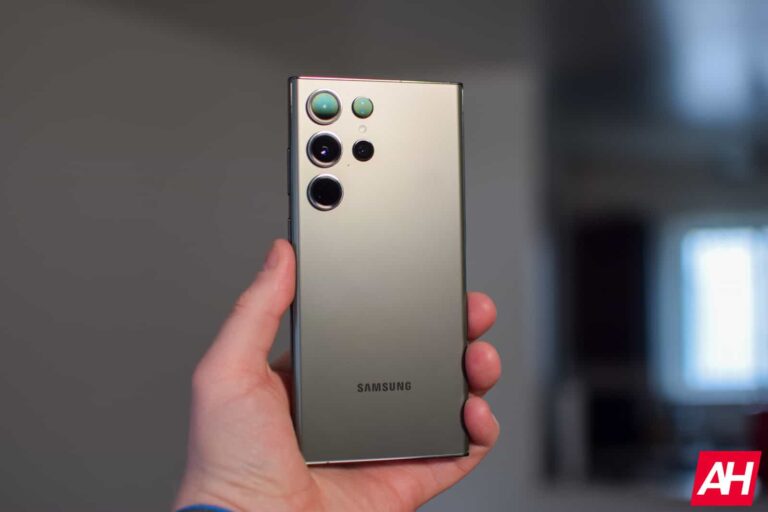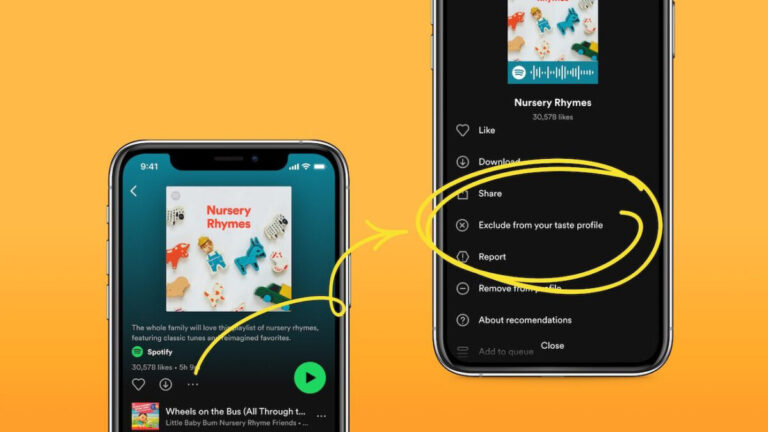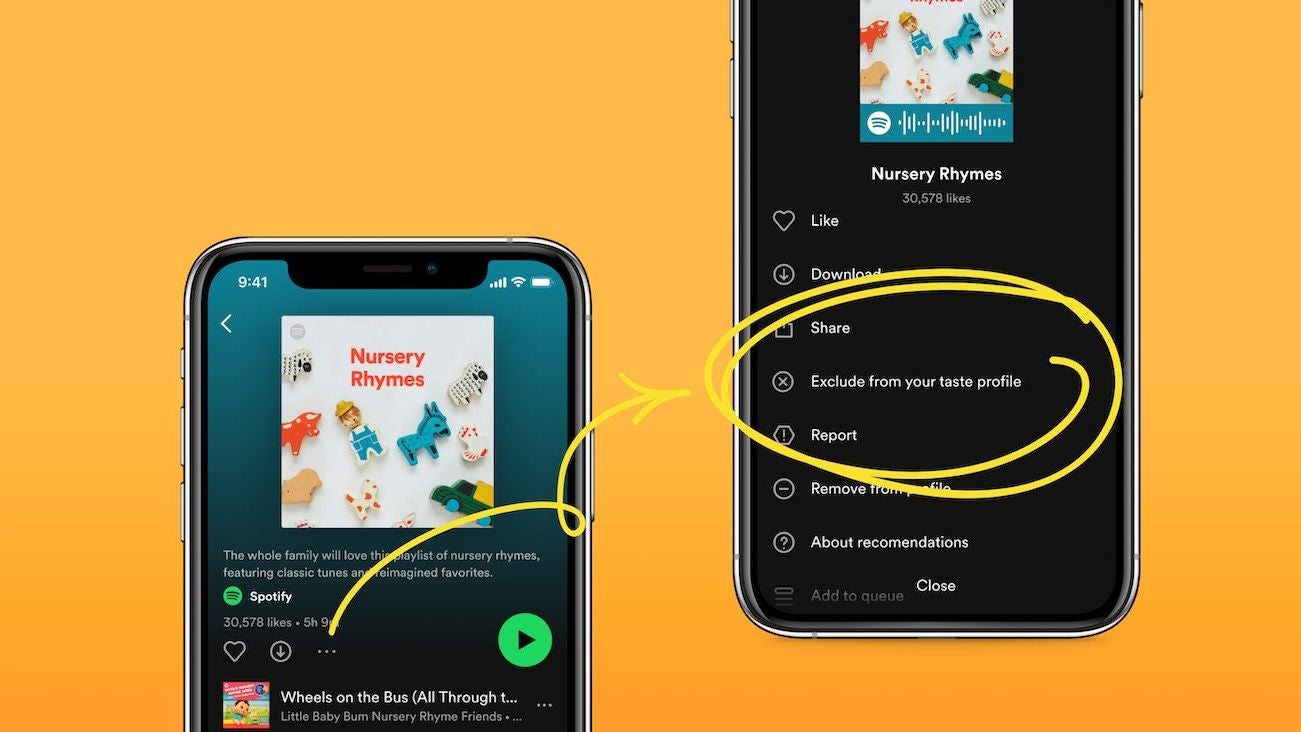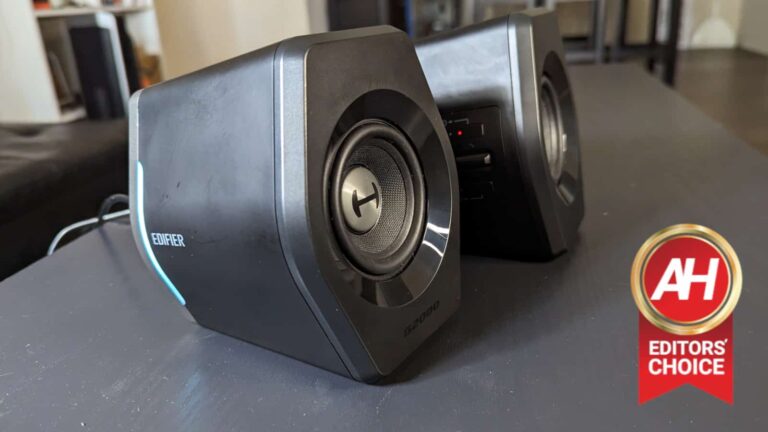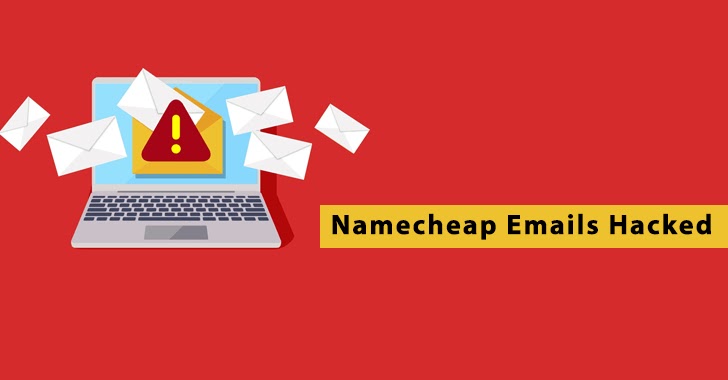I’ve reviewed the OPPO Find N last year, and it was… well, an extremely pleasant surprise. It delivered a very nice, compact design that screamed quality. It offered a no-gap design, and an excellent hinge that hid the crease better than any foldable out there. Well, the OPPO Find N2 is now here, and it delivers all that, plus some additional refinements that we’ll talk about in this review.
Before we get down to it, do note that the review unit we have is made for the Chinese market. This phone, at the time of this review, is not coming to global markets. Its Find N2 Flip sibling is, but not the Find N2. The state of apps for tablets and foldables probably has a lot to do with that, but OPPO may yet change its mind. That being said, I was able to install Google Play Services on this phone without a problem, and everything worked well on that end. We’ll talk more about the software later on, though. Let’s get started.
Table of contents
OPPO Find N2 Review: Hardware / Design
The OPPO Find N2 resembles its predecessor a lot, but it simply feels like an even more quality product. It is made out of metal, carbon fiber, and glass. It comes in both glass back and vegan leather back variants. For transparency’s sake, I’ve used the latter. It has flatter sides than its predecessor, and that’s actually a good thing. They do come with chamfered edges, and the phone is immensely comfortable to hold and use. It is, without a doubt, the most comfortable vertically-folding smartphone I’ve ever used.
It is 42 grams lighter than its predecessor

This thing is 42 grams lighter than the Find N. For comparison’s sake, the Find N is heavier than the Galaxy Z Fold 4, while the Find N2 is considerably lighter. The vegan leather model weighs 233 grams, while the glass back model weighs 237 grams. OPPO managed to achieve this, partially thanks to the use of carbon fiber. It is also a bit thinner than its predecessor, which is always a welcomed change when it comes to foldables.
It includes OPPO’s second-gen ‘Flexion’ hinge
OPPO made its second-gen Flexion hinge for this phone, and it’s as great as ever. Well, even better, actually. The crease is even less visible, claims OPPO, and it really is not nearly as bad as the one on the Galaxy Z Fold 4. OPPO even managed to lower the number of parts inside the hinge from 138 to 100, which is a major success. You can even fold the phone in 45-degree and 125-degree angles, and let it sit there. It’s quite versatile, and quite frankly feels great to use. The folding mechanism feels sturdy, and quite frankly… screams quality while you’re using it.

I’ve used quite a few foldables over the years, and this is my favorite foldable hardware to date. This form factor is what other OEMs should strive towards in my opinion. OPPO did a really great job here. One thing that people will certainly point out is that it doesn’t offer an official IP rating. You definitely should not get this phone wet. The Galaxy Z Fold 4 does offer it, but I never use my phones (in general) in the rain, nor am I in situations where I need it. So, it’s not really a problem, and I much prefer having a smaller form factor, less of a crease, and a gapless design than an IP rating. That may not be the case for you, though, of course.
Official case
OPPO also includes a case in the box, at least it was included in our retail box. That means that it comes with the vegan leather model for sure, we’re not sure about the glass back model. In any case, this case is actually quiet nice. It is made out of plastic, but with a slight rubbery feel. It’s difficult to explain, but it feels really nice, actually. It’s a two-part case. The back part snaps onto the back of the device, while the front part actually comes with sticky pads on the inside. When fully on, the case does feel really nice. As you’ll notice in the images, I didn’t even use the sticky pads for the front side of the case, as I placed the case on just for the sake of trying it out, and for the sake of these images.
OPPO Find N2 Review: Display
The main difference between the OPPO Find N2 and other vertically-folding phones is the display aspect ratio. The Find N2, much like its predecessor, leans towards the horizontal orientation. We’re talking about its main display, of course. It features a 7.1-inch 1792 x 1920 foldable LTPO AMOLED display. That display looks great, actually, visibly better than the one on the Find N, even though that one was really good too. It has punchy colors, deep blacks, and it gets quite loud when you need it to. It can go all the way up to 1,550 nits of brightness at its peak. This display also supports HDR10+ content.
The cover display has a 120Hz refresh rate now as well

The second display measures 5.54 inches. It has a resolution of 2120 x 1080, and it’s also a mostly flat AMOLED panel with a 120Hz refresh rate. Its right side is slightly curved for ease of use, though. This display has a peak brightness of 1,350 nits, and it is protected by the Gorilla Glass Victus. Compared to the Find N, this is a major improvement, as the Find N’s cover panel has a 60Hz panel. That cover display on the Find N2 also looks great, to be quite honest. It’s punchy, and smooth. The blacks are deep, and the viewing angles are excellent.
Both panels offer a 480Hz touch sampling rate
To make things even better, both displays have a 480Hz touch sampling rate. Not many people care about that, but if you do, you’ll be glad to hear it. I’ve noticed how nice it is to interact with it, so I had to look it up. It’s really nice of OPPO to deliver such quality with both displays, and thus present us with a notable improvement compared to the first-gen model.
During my usage, I’ve used mostly the main panel, in all honesty. I opened up the phone whenever I could. That cover display did come in handy, though, of course. When I’m out and about, and can’t really handle the phone with two hands, the cover display served me brilliantly. It was responsive, and more than large enough, and I don’t exactly have small hands. Gripping the phone was not a problem at all, and that vegan leather backplate certainly helped. Also, the crease on the main display is barely visible, it’s a lot less visible than the one on the Galaxy Z Fold 4, Flip 4, HONOR Magic Vs, and so on. You can feel it under your finger when you go in that direction (which didn’t occur to me often), but you’ll feel it less than pretty much all others, which, again, is a good thing.
OPPO Find N2 Review: Performance
The OPPO Find N2 is fueled by the Snapdragon 8+ Gen 1 SoC. That processor proved its prowess in a number of phones in 2022. It’s not only immensely powerful, but also great when it comes to power consumption. It performed great inside the OPPO Find N2 as well. OPPO paired with 12GB/16GB of LPDDR5 RAM. In our case, it was the 12GB RAM model. UFS 3.1 flash storage is also included in the package, along with Android 13. OPPO’s ColorOS 13 comes pre-installed.
The performance was excellent
I don’t really have any complaints when it comes to sheer smoothness, and performance in that sense. Everything was very snappy, ranging from opening and closing apps, and consuming multimedia, to image editing and playing games. Playing games on the main display was actually a great experience, and that chip managed to keep everything running smoothly. So, the bottom line is, I didn’t really have any issues with lag, slowdowns, or anything of the sort. We’ll talk about the software later on, that’s not something I’ll touch upon here. Oh, and by the way, the fingerprint scanner works great. It’s fast and accurate. You can set it to activate upon a physical press, or when you simply lay your finger on the power key.
OPPO Find N2 Review: Battery
The OPPO Find N2 includes a 4,520mAh battery pack. It is 20mAh larger than the one in the OPPO Find N. This time around, however, the cover display has a 120Hz refresh rate, and it’s slightly larger. The thing is, the Snapdragon 8+ Gen 1 is excellent when it comes to power consumption, and ColorOS also takes care of the battery side of things. I was a bit concerned at first, but it turns out the battery life is actually quite good. Well, at least when it comes to my usage.

Considering that the Find N2 has two displays, your results may vary significantly. We all use different apps, have different signal strengths, and so on, so… keep that in mind. Also, I didn’t really game much on the phone, other than for testing purposes. Having said that, I did do everything else, from messaging, emails, browsing, taking plenty of pictures, some videos, image editing, video editing, and so on. Everything but gaming on a regular basis, basically.
I managed to get really, really good battery life
I managed to get around 6.5-7 hours of screen on time from the device (even above that at times). That being said, I used both the main and cover displays, quite a bit, but the main display was in use longer in a day, I’d say. Getting over 7 hours of screen-on-time is possible, it all depends on your usage, and your battery settings. All in all, I was pleasantly surprised with the battery life here.
67W charging was also quite useful. It was immensely fast, as I was able to fully recharge the phone in about 40 minutes. The device does support reverse wired charging too, but it does not support wireless charging at all, unlike its predecessor. I understand why OPPO did it, however, to keep the phone as light and thin as possible, and avoid unnecessary heating.
OPPO Find N2 Review: Camera
The OPPO Find N2 features a 50-megapixel main camera, a 48-megapixel ultrawide unit, and a 32-megapixel telephoto camera. The camera performance was really good, when the main camera is concerned. I managed to get really nice images that look quite realistic. They did not look overprocessed, or underexposed. The sharpening never felt too aggressive, and the camera even did a good job with exposure and HDR images. It’s a shame it’s winter here, so I didn’t really get a chance to shoot some sunsets with the device.
The main camera does an excellent job

What I did notice, when the main camera is concerned, is that it tends to saturate the reds a bit too much, but only if there’s too much of red color in a frame. That’s what most cameras do, though, and it’s not as bad as it sounds. It also doesn’t really go out of its way to brighten up scenes to make them unrealistic. It does brighten them up just enough to make them look nice, but doesn’t make nighttime shoots look like daytime shots, in auto mode. And yes, you can use auto mode for nighttime shots without a problem, as long as it’s not pitch dark. There is a night mode included, though, and it can brighten up scenes quite a bit, and do a great job. What I did notice is that the phone tends to crush blacks, in darker scenes, which can be a problem. All in all, I’m really happy with the main camera, to be quite honest. It does a great job.
The ultrawide camera saturates colors a bit more
The ultrawide camera does bring a bit of saturation with it. The moment you switch to the ultrawide camera you will notice things are a bit more saturated. The color science is not the same, even though OPPO does its best to keep it as close as possible. The ultrawide camera does a good job, though. It offers a 115-degree FoV, and in most cases, you can use it with confidence. When shooting in the dark, however, we’d suggest sticking to the main camera, however, as the difference is considerable.

The telephoto camera does make things slightly less saturated than the main camera, it’s the opposite of the ultrawide camera. The results are good, but nothing to write home about. You do get 2x optical zoom here, we’d prefer if 3x or 3.5x was on offer, but hey… OPPO had to keep the weight and thickness in check here. So, we won’t complain too much about it. This is also a camera that you can use with confidence, unless you’re in really dark conditions, in which case the main camera is a far better option.
There is a macro mode here
The phone does have a macro mode too, and it does a decent job as long as there’s light in the shot. Don’t try to use it at night, though. It’s not the best macro mode I’ve seen, but it’s not bad. The phone can record 4K video at 60 FPS, and it does a really good job with it. The footage is stable, and there’s no warping or anything of the sort. It does a good job in low light too. All in all, I’m really happy with these cameras. I always assume the worst when it comes to foldables, but OPPO did a good job here.
Camera samples:
OPPO Find N2 Review: Software
Do note that the OPPO Find N2 comes with Android 13 and ColorOS 13 on top of it, but this software is made for China. At the time of this review, OPPO did not have plans to deliver this phone to global markets, mainly due to the state of apps for tablets and foldables. However, that may change down the line. Having said that, I was able to install Google services without a problem on the device, and on that end, everything worked well. I did stumble upon a number of annoyances on the way, mainly due to the fact this software is made for China.
China build of ColorOS has its quirks

First and foremost, a lot of apps that you don’t need or want comes pre-installed. The good news is, you can remove the vast majority of them. That’s the first thing I did, basically. Don’t worry, if you mess something up, there is a built-in way to restore the apps you removed. There is also ColorOS’ battery management. You can add only 5 apps to ‘Auto launch’ list, other than the ones ColorOS automatically added. That can be an issue for some apps. Though, granted, the China version of ColorOS 13 is much better at it than I remember on the Find N. I was unable to get notifications for a lot of apps there in time, basically anything that wasn’t added to the auto launch list. Things are a bit different here, as I do notice notifications coming through more regularly even for apps that are not on that list. Still, I wish things were as simple as they are on the global version of ColorOS. Background apps are handled a bit differently.
I did encounter some odd bugs, but nothing too annoying, to be quite honest. For example, when using adaptive display brightness, the brightness tends to go way up while you’re using the device, and then gradually decrease back to normal for no apparent reason. Some of those bugs were fixed with the latest update that arrived to the phone, but not the one I just mentioned. The good news is, OPPO will likely keep on pushing updates to the device regularly, so I do hope those small annoyances get fixed.
You can’t change the default launcher

Considering this is a Chinese version of ColorOS, I also couldn’t change the default launcher. You cannot use a third-party launcher app here. Well, you can, but you can’t set it as default, so whenever you swipe up to go home, you’ll be thrown to ColorOS’ launcher. I have to admit that is very annoying, as ColorOS lacks some basic features, such as controlling the app grid on the home screen, support for advanced app shortcuts, and proper icon pack support. I would much prefer to use Nova Launcher, Microsoft Launcher, Niagara Launcher, or some of the other options for that purpose. That would be possible on the global version, but not here.
There are quite a few such annoyances due to the fact this is not a global build of ColorOS. ColorOS 13 is actually excellent on the Find X5 Pro, the global version, so I do notice the difference. Other than the annoyances I’ve mentioned, and some additional ones that I won’t get into, using the phone does feel really nice, even with this China build. Once I set everything up, it was business as usual, to be quite honest. OPPO also packed in some really useful features in ColorOS.
The FlexForm mode is quite useful
First and foremost, there’s the FlexForm mode, which activates when you open the phone at an angle of 45 or 125 degrees. That’s a special mode, similar to what Samsung offers on the Galaxy Z Fold 4. You can basically make a small laptop this way. It’s also useful for the camera app, as you can prop the phone to take a group selfie or something like that.
OPPO also included some useful gestures here
You can also swipe from the top of the display down with two fingers to launch a split screen mode. ColorOS allows you to split two apps horizontally, or vertically, whichever you prefer/need. You can even arrange app combos to launch via an icon on the home screen. For example, you can open YouTube and WhatsApp side by side, tap the middle of the screen, and save that combo. It’ll now always be available for you to launch into.
Swiping across the screen with three fingers will take a screenshot. If you have two apps open side by side, swiping across one app will capture only a screenshot of that app, swiping across both of them will capture the entire screen. The gestures feel intuitive to use, to be quite honest. There are a number of such software features that you can use, and quite frankly, pretty much all of them are well-optimized.
OPPO Find N2 Review: Should you buy it?
Needless to say, foldable phones are now for everyone. They’re still quite pricey, for one thing, and the form factor also doesn’t suit everyone. If you tend to get your phones wet, this device is not for you, definitely. Also, there are some quirks with ColorOS that you may want to avoid, mainly because this build is not for global markets. On the other hand, this is the best foldable hardware out there, in my opinion. It’s incredibly well built, with a gapless design, minimal crease, and a very reliable folding mechanism. It’s also great for one-hand use, when folded, and it has a reliable camera and battery life, not to mention great displays and fast charging. Figure out what you want, and then weigh your options. It’s difficult to fault OPPO for IP rating and wireless charging considering they were aiming to hit this form factor. Both of those would make the phone bulkier.

You should buy the OPPO Find N2 if:
- You want a foldable that feels like a quality product
- You want a compact foldable smartphone for easy one-hand use (when folded)
- You want to get a gapless design foldable & minimal crease
- You appreciate fast charging & included charger
- You don’t mind spending over $1,000 on a phone
- You don’t mind sideloading Google services before you start using the device
- You appreciate a reliable main camera
- You need a truly reliable fingerprint scanner
You shouldn’t buy the OPPO Find N2 if:
- You need water and dust resistance
- You need wireless charging
- You don’t like thicker phones
- You don’t want to deal with ColorOS (China build) quirks
[ad_2]
Source link






